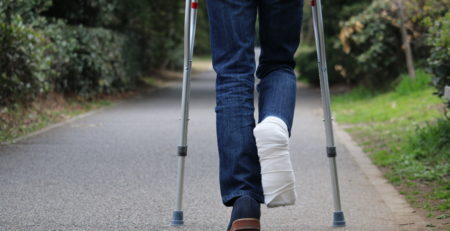Workers’ Compensation Laws In the United States and the UK: How Different Are They?
Workers’ compensation originated in Europe in the 19th century as a direct result of the growing power of the industry and the rise of the industrial age. The first country to introduce the concept of employer liability (the precursor to Workers’ compensation) was Germany. Switzerland and England followed the example.
Workers’ Compensation, United States’ answer to employer liability first appeared early in the 20th century. Mississippi was the last state to adopt workers’ compensation laws in 1948. This was 75 years after Employer liability was established in Europe.
There’s no doubt that US workers’ compensation laws were largely influenced by the Employer liability laws in Europe. That said, there are many notable differences between the two. We’ve asked Workers Compensation Attorney Group experts to clarify what these differences are.
Workers’ Compensation Differs in Several Aspects
The workers’ compensation or employer liability laws vary from country to country in Europe. The laws fall into two classes: Beveridgean and Bismarckian. The former is mainly practised in Eastern Europe, while the latter is commonly followed by countries in Southern Europe such as Portugal, Italy, Sweden, and Norway, as well as the UK.
The Bismarckian system relies on the insurance program and the contribution employers make to this program. On the other hand, Beveridgean workers’ compensation is paid through taxes.
In comparison, the workers’ compensation in the United States differs on the state and federal level and is heavily influenced by the Bismarckian system.
What are the differences and similarities between US and UK workers’ compensation
As we previously mentioned, there are still certain differences between how the two systems work. Here are the most notable ones:
Injury and Illness
In the United States as well as the UK, injuries in the line of work are covered by the workers’ compensation insurance. In both cases, the employer requires a proof that the injury or the illness was a direct result of the workers’ occupation and work. In the United States, the employee needs to provide direct proof of the correlation between the illness or injury and the workplace in order to win the workers’ compensation claim.
On the other hand, the UK, as well as most European countries, have a list of occupational-related injuries and illnesses and how they are associated with the workplace and potential hazards.
Accidents During Commutes
This is one of the biggest differences between the workers’ compensation laws here and overseas. In the United States as well as most of Europe, workers are compensated for the injuries obtained during the commute. However, the UK (as well as Denmark) do not cover accidents during commutes.
Coverage Extent and Fault
In the US, workers’ compensation is a no-fault system meaning that it doesn’t matter if the employee was responsible for the accident that led to injuries or not, they are entitled to workers’ comp benefits either way. In both the UK and the US, however, this does not extend to cases where employees were using drugs or alcohol or exhibited reckless behaviour prior to the accident.
Source of Insurance
In the UK and most of Europe, workers’ compensation policies are controlled by public organizations. In Europe in general, these may or may not, in turn, be controlled by the government. In the United States, the employer provides the insurance directly or through a private insurance company. While the state and federal governments dictate the terms of these laws, the actual insurance is controlled privately.
If you have any additional questions about workers’ compensation laws in the United States you can contact our partners who helped us compile this article, Workers Compensation Southern California at 2200 W Orangewood Ave #240, Orange, CA 92868; (714) 598-3900.












